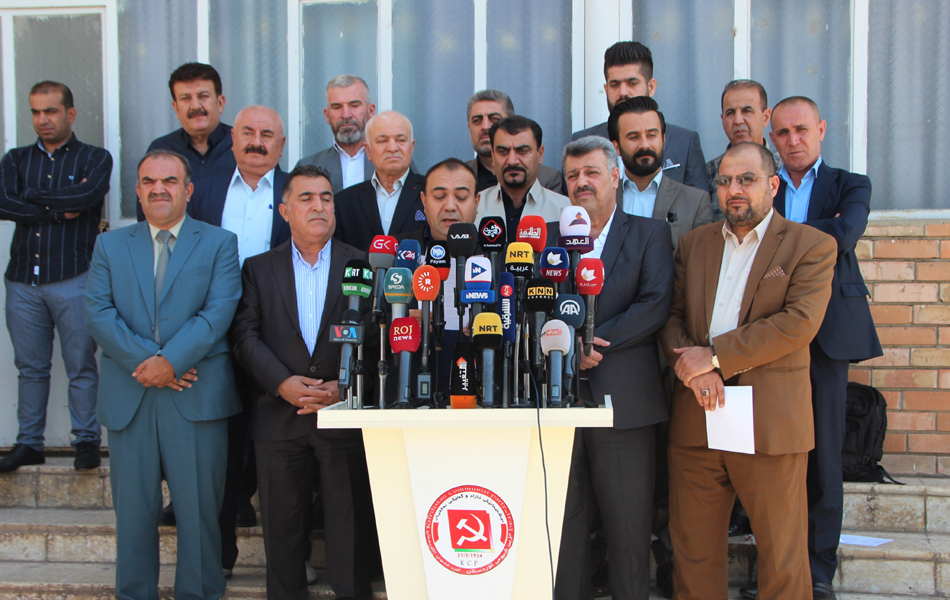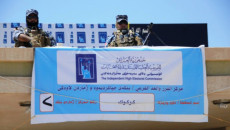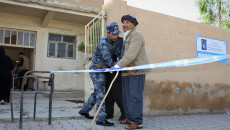As Kirkuk is divided into three electoral constituencies, the different components and political parties in the province are jostling to divide each other’s constituents and unite their own.
In December 2019, the Iraqi parliament approved the provincial elections law, with the exception of the article on "multiple electoral constituency" and parliamentary seats, which is still the subject of disagreement among political blocs, especially in Kirkuk province.
A debate on the article that was scheduled for 10 October was postponed yet again to an undetermined later date. Since then, each political party has been contemplating their interests regarding the the delimitation process of constituencies.
PUK and KDP
The Patriotic Union of Kurdistan (PUK), which has obtained the majority of Kirkuk’s seats in the previous four parliamentary elections, insists on its view regarding the three electoral constituencies of Kirkuk province.

Ali Qalayee, a PUK official in Kirkuk, told KirkukNow: "We have four to five [delimitation] options for the three constituencies, in general we think that the more the constituencies are spread, the better for us. We aim to win seats inside the constituencies in and outside the city."
One of the options for PUK for a constituency is the combination of the subdistricts of Laylan and Qarahanjir plus a number of neighbourhoods inside the city, among them: Panja-Ali, Barutkhana, Iskan, Imam-Qasim.
Based on previous elections, the PUK expects to win all the seats within that potential constituency.
Another option of PUK’s options for a constituency is the combination of the subdistricts of Shwan, Pirdé, Taza plus a number of neighbourhoods in the city, among them: Rahimawa, Almas.
The PUK also eyes another potential constituency, which is Kirkuk’s centre district (Kirkuk City), Daquq district and Taza district.
Generally, we [PUK] expect seven seats in total
Qalayee says: “If the districts outside Kirkuk [City] contain 3-4 seats, we can win one of them. And from the first two potential constituencies, we will obtain five seats, but will fight for six. Generally, we expect seven seats in total.”
With such potential constituencies, the PUK will keep its own votes and divide those of its rivals at the same time.
The KDP, on the other hand, insists on keeping the centre district one single constituency, along with Hawija district. And all the other districts and subdistricts outside the city to be one single constituency.
“KDP’s choice is neither in the interest of Kurds nor PUK’s, and will cause the division of the Kurdish vote.”
Women quota spoiled the game for the Turkmen
Initially, the prevailing view was Kirkuk province to be divided into two constituencies; the centre district one and the rest another. This was the preferred choice by the Turkmen.

But the matter of allocating three quota seats for women spoiled the game as the province was divided into three constituencies. This will divide the Turkmen vote.
Ahmad Ramzi, a cadre of the Turkmen Front, told KirkukNow: “We don’t want to declare any preferred choice for the media yet. We have set up an operation room with Turkmen representatives in Baghdad and will work on the issue thoroughly.”
“Our initial attempt was to keep the province a single constituency, two would have also been better [than three]; we were never for three constituencies. But that has become de-facto now, and we are currently busy discussing the determination of the boundaries of the constituencies.”
Arabs still figuring it out
For the Arab component in Kirkuk, next to competing with other ethnic groups, there is division within itself. Some even fight for determining constituencies in accordance to tribal demographics.
Hatam Ta’i, the spokesperson for Kirkuk’s Arab Committee, says that they are still waiting for the process to finalize.
He says that the Parliament must first make clear how the delimitation of constituencies will be determined, not according to the will of political parties. He also says that there must be uniformity across all the provinces.

“The issue of the constituency delimitation is not just about ethnicity; some parties want to even have a constituency for each tribe, which makes it clear that the struggle has now become tribal,” Ta’i added.
Two fronts, divided between two Arab clans (the al-Jibouri and al-Obaydi), are now competing with one another.
KirkukNow has learned that a part of Kirkuk’s Arabs is in favour of Daquq and the centre districts to be one constituency, and the Hawija and Dibis districts another. This option is also favoured by the Turkmen to a degree, as they have voters in Daquq district.







